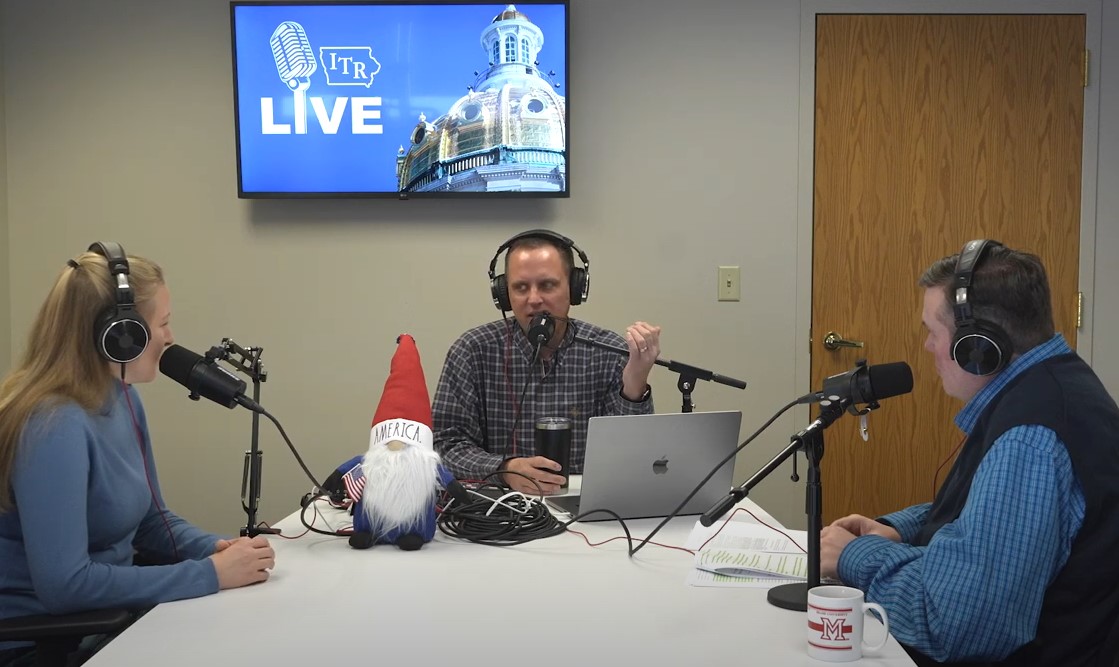The Condition of the State Address and Opening Day Speeches
The Condition of the State Address: A Conservative’s Perspective
The Governor’s Condition of the State address serves as a momentous occasion where policymaking intentions and the state’s health are articulated. For many, including ITR Foundation’s Sarah Curry and John Hendrickson, the event marked their first time attending in such a capacity, providing them with an insight into the state’s ceremonial and operational aspects. The address is not just a speech; it is a tradition that ties present governance to a century of state history, echoing through the halls of the Iowa Capitol Building. This address sets the stage for outlining the legislative framework and goals that will shape the state’s future direction.
Emphasizing Fiscal Responsibility and Ambitions for Tax Reform
At the heart of the conservative agenda in Iowa is a robust approach to fiscal management, emphasizing the need to return surplus income to the taxpayers of Iowa. Governor Reynolds proposed aggressive and responsible tax cuts, intending to allow Iowans to retain more of their earnings while still maintaining the financial health of the state government. Her proposed bill would expedite the process of reducing income tax rates, asserting that the surplus indicates overtaxation rather than a spending deficit. With a budget surplus of $1.83 billion and an abundance of reserve funds, the Governor’s assurance of a well-poised economy sets the stage for potentially historic tax reform in Iowa.
Tax Policy: Acceleration and Implications for Iowans
Governor Reynolds said, “Our most recent income-tax bill established a flat rate of 3.9%, set to phase in gradually until finally taking effect in 2026. As always, it was an aggressive, growth-oriented policy on a responsible, conservative timeline.
And once again, opponents said that letting Iowans keep more of their money would break the government. One left-leaning group called it a ‘recipe for disaster.’
Well, that was wrong. Two years later, it’s clear that we are well-positioned to go further, faster.
Even with the tax cuts we have already delivered, state revenue continues to grow, ending the year with a $1.83 billion surplus and more than $900 million in reserve funds.
Let me be absolutely clear: the surplus does not mean that we aren’t spending enough; it means we’re still taking too much of Iowans’ hard-earned money.
Tonight, I’m proposing a bill that reduces the income-tax rate to a flat 3.65% while allowing it to take effect this year, retroactive to January 1st. The following year, in 2025, the rate would fall again to flat 3.5%.”
The fiscal conservatism that has led to significant surpluses in Iowa’s budget is propelling discussions toward accelerating tax cuts that have been on the docket. Making tax relief retroactive to the start of the year means Iowans could soon feel this relief directly through adjusted withholdings and, ultimately, their take-home pay. This change aims to provide prompt assistance to those grappling with increasing living costs and inspire optimism for future economic stability.
Assessing the Broader Fiscal Environment and The Minnesota Contrast
There is an acknowledgment of the broader fiscal landscape, underlining the importance of maintaining a competitive stance amongst other states. With comparisons drawn to Minnesota’s fiscal woes, Iowa’s budgetary discipline and surplus are highlighted as exemplary. Leader Whitver and Speaker Grassley have both voiced concerns about other states’ burgeoning budgets and tax hikes, using them as cautionary examples of fiscal mismanagement that Iowa aims to avoid.
In his opening day speech, Speaker Pat Grassley said, “Our counterparts in the Minnesota Capitol building are making Iowa an even more appealing place to live, work, raise a family, and run a business. This session will explore policies that further incentivize businesses currently stuck in states like Minnesota who take their policy cues from California to bring their businesses and employees here to Iowa, where they will have the freedom to grow and thrive and raise their.”
Iowa Senate Majority Leader Jack Whitver talked about Minnesota, too. “While Iowa has passed measured increases in state spending, our neighbors to the north have struggled quite a bit with that concept. Minnesota Democrats have their own trifecta and they used it to grow their budget by 38%. But a 38% budget increase wasn’t enough for Minnesota liberals. They passed a billion-dollar bonding package. Then they signed into law 2.2 billion in additional tax increases, even with historic surpluses in their state.”
Whitver continued, “The contrast between the positive news from the Iowa Revenue estimating projection and Minnesota’s is clear. Iowa is projected to have a surplus of roughly $2.8 billion in fiscal year 2025, while Minnesota’s revenue estimating panel projected a $2.3 billion deficit in 2025. So much rhetoric has been spilled in this building, accusing Republicans of turning Iowa into the next Kansas. I think the much bigger and much more real danger is for states becoming the next Minnesota.”
Grassley and Whitver are correct. Minnesota and California are two examples of taxing and spending. They’re both running deficits right now, and their fiscal foundation is not good. We always hear from the media about criticizing tax cuts; that’s irresponsible.
Conclusion: Iowa’s Forward Momentum
The recent legislative discussions indicate Iowa’s proactive stance on varied issues, from local government fiscal health to engagement with significant national and international concerns. As the legislators prepare for the work ahead, the commitment is to keep Iowans’ interests at heart.
Whitver concluded his speech with a great summary. “In one sentence, here’s the plan: Cut taxes, control spending, reform government, and let Iowans be great. Let’s get to work.”

